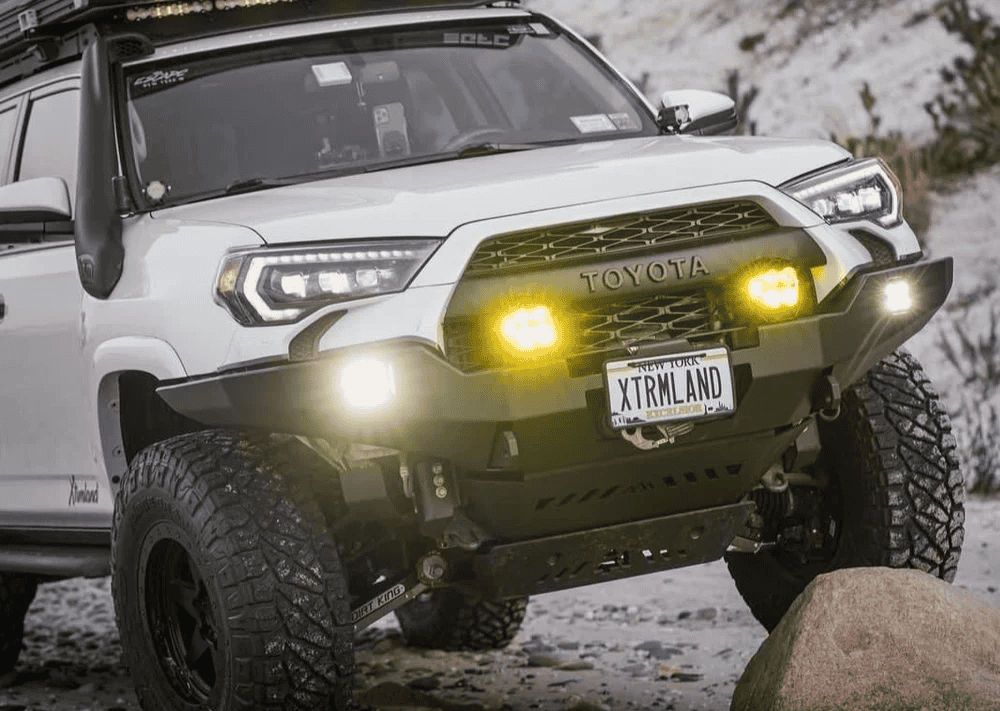Overland Vehicles

Hard shell designs protect fabric with a rigid clamshell, wedge, or box style shell. The shell material matters: aluminum honeycomb offers strength and heat resistance, while reinforced composites keep weight low and shed wind. A quality overland rooftop tent should open in seconds, hold shape in gusts, and close without wrestling the fabric. Look for continuous bulb seals around the perimeter so rain does not wick into the bedding. A flat, supportive mattress and stable ladder complete the sleeping system.
The best hard shell roof top tent earns its place through repeatable deployment. Gas struts or scissor mechanisms should lift smoothly without binding. Latch hardware needs to be glove friendly in cold weather and secure on rough roads. Review the shell’s edge trim and hinge plates for corrosion resistance since salt and red clay test every fastener.
Metal shells resist hail and heat, and they tolerate roof mounted gear like traction boards or solar when the manufacturer approves static load on top. Composite shells cut weight and reduce thermal bridging. Hinges should span the width, not just a few small brackets, to spread load in wind. Check roof top tent reviews for reports of struts losing pressure, as that can turn a one hand setup into a wrestling match. Ask for the hardware spec for crossbar clamps and verify torque values to avoid crushed bars.
Canvas weight and coatings control both condensation and storm performance. A breathable, high denier fabric with storm skirts, taped seams, and adjustable vents keeps the interior dry through shoulder seasons. For winter, look for insulated liners that attach without sagging into your headspace. Mattress density matters more than thickness; a firm, even foam reduces cold spots across slats. The best hardshell rooftop tent will include an anti condensation mat and multiple vent paths to purge moisture from breath and wet gear.
Start with your vehicle roof’s dynamic and static ratings. A light tent plus rack and mounts can still exceed roof allowances on small crossovers. Measure crossbar spacing and check the tent’s mounting rail span; long rails spread load across more structure. Keep the tent as low as possible to lower the center of gravity and reduce wind noise. Expect some fuel economy penalty; a tapered shell and tight fit to the rack help. Confirm ladder angle and door location so exits are safe on uneven ground.
User feedback reveals the truth a spec sheet misses. Read rooftop tent review notes about seal performance in sideways rain and whether the shell pools water when closed. Check for reports of flapping fabric at highway speeds, which hints at loose edge reinforcement. Repeated open close cycles expose zipper quality and slider durability; a metal pull with a covered path usually wins. Look for comments on bedding storage while closed. The best hard shell rooftop tent lets you leave a medium quilt and pillows inside without crushing the seal.
Noise is another signal. A quiet shell on the road points to clean aerodynamics and tight latches. In camp, a rigid shell that does not drum in wind keeps sleep undisturbed. Review ladder flex under heavier campers and how it feels on wet boots. Finally, watch independent roof top tent reviews that measure true setup time, not just optimistic marketing numbers. Thirty seconds is realistic only when the fabric tucks cleanly and the ladder deploys without extra adjustments.
A tent is only part of the roof system. The rack, crossbars, mounts, and vehicle payload all interact. Plan for awnings, lighting, recovery gear, and potentially Starlink or solar before you choose shell size. Keep weight centered between the axles and as low as possible. Wire scene lighting with weather rated connections and consider amber options for bugs and dust. If you carry bikes or boards, verify hatch clearance and door orientation so everything can open without clashes.
For travelers building a complete overland package, fitment and integration matter as much as the tent itself. If you want a turn key roof system built to your vehicle’s limits, explore our Overland rigs page at Overland rigs. When you are ready to pair a tent with racks, mounts, power, and trail lighting, see our Custom overland upfit. Curious how we approach engineering, materials, and client care from kickoff to handoff? Read Why choose OZK.
Looking for a quiet night at altitude without fuss or cold spots, and a rig that behaves predictably on washboard and highway alike? Our team designs roof systems that respect factory roof ratings, dial in crossbar spacing, and route clean, watertight wiring for camp life. Share your vehicle, crew size, season plans, and storage needs, and we will outline a safe, durable path to a reliable overland rooftop tent experience.
Ready to dial in a hard shell rooftop tent as part of a complete system? OZK Customs designs racks, mounts, power, and lighting as one engineered package. Tell us your vehicle, payload, and travel goals and we will spec a quiet, weather tight setup that respects roof ratings and ride quality. Share a few details to schedule your consult.
ADDRESS:
6159 E Huntsville Rd, Fayetteville, AR 72701
PHONE:
(479) 326-9200
EMAIL:
info@ozkvans.com